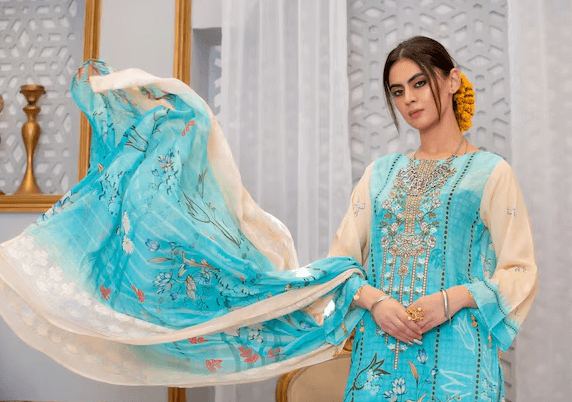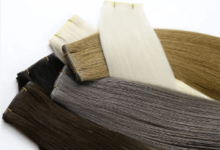The Role of Pakistani Clothes in the Global Fashion Industry

Pakistani clothing, renowned for its intricate designs, vibrant colors, and rich cultural heritage, has carved a unique niche in the global fashion industry. From traditional garments like the shalwar kameez and bridal wear to contemporary fusion fashion, Pakistani attire is gaining international acclaim.
This article explores the multifaceted role of Pakistani clothes in the global fashion scene, examining their influence, evolution, and cultural significance.
Historical Context of Pakistani Clothing
Origins and Evolution
Pakistani clothing has evolved over centuries, influenced by the region’s diverse cultural and historical backdrop. The traditional attire of Pakistan reflects the amalgamation of various cultures, including Persian, Mughal, and Central Asian influences.
The shalwar kameez, for instance, has roots in ancient Persia and has been adapted and refined over time to suit local tastes and climatic conditions.
Traditional Garments
The shalwar kameez, saree, lehenga, and kurta are quintessential Pakistani garments that have stood the test of time. Each region in Pakistan has its unique style and variation of these garments, characterized by specific embroidery techniques, fabric choices, and motifs. These traditional clothes are not just attire but a reflection of the country’s rich heritage and cultural identity.
The Global Appeal of Pakistani Clothes
Intricate Embroidery and Artistry
One of the defining features of Pakistani clothes is the intricate embroidery and craftsmanship. Techniques such as zardozi, resham, aari, and mirror work are renowned for their complexity and beauty. These embellishments add a layer of luxury and sophistication to the garments, making them highly sought after in the global market.
Vibrant Colors and Patterns
Pakistani clothes are known for their vibrant colors and bold patterns. The use of rich, saturated hues and intricate designs sets them apart from Western fashion, offering a fresh and exciting aesthetic. This distinctive style appeals to a global audience seeking unique and culturally rich attire.
High-Quality Fabrics
The use of high-quality fabrics such as silk, cotton, chiffon, and georgette contributes to the global appeal of Pakistani clothes. These materials not only provide comfort but also enhance the overall look and feel of the garments, making them desirable in international markets.
Pakistani Designers on the Global Stage
Pioneers in International Fashion
Several Pakistani designers have made significant strides in the global fashion industry, showcasing their collections at international fashion weeks and collaborating with global brands. Designers like Hassan Sheheryar Yasin (HSY), Sana Safinaz, and Bunto Kazmi have brought Pakistani fashion to the forefront, gaining recognition and accolades worldwide.
Fusion Fashion
Pakistani designers are adept at blending traditional elements with contemporary styles, creating fusion fashion that resonates with a global audience. This approach not only preserves the cultural essence of Pakistani attire but also makes it accessible and appealing to people from different cultural backgrounds.
Celebrity Endorsements
International celebrities and influencers have played a crucial role in popularizing Pakistani clothes. Bollywood and Hollywood stars, along with global fashion influencers, have been spotted wearing Pakistani designs, further boosting their visibility and appeal in the global fashion scene.
Read also Enhancing Safety and Security with a Retractable Pool Cover
The Economic Impact of Pakistani Fashion
Export Market
The export of Pakistani textiles and garments has seen significant growth over the years. Countries like the United States, the United Kingdom, and the United Arab Emirates are major importers of Pakistani clothes. The increasing demand for traditional and contemporary Pakistani attire abroad has contributed to the growth of the country’s textile industry.
Employment and Artisanal Craftsmanship
The fashion industry in Pakistan provides employment to millions of people, from designers and craftsmen to weavers and embroiderers. The preservation and promotion of traditional craftsmanship have not only sustained these art forms but also provided livelihoods to many artisans, contributing to the socio-economic development of the country.
Challenges and Opportunities
Navigating Cultural Sensitivities
While Pakistani clothes are gaining global recognition, navigating cultural sensitivities remains a challenge. Designers and brands must ensure that they respect and preserve the cultural significance of traditional attire while appealing to a global audience. This balance is crucial in maintaining authenticity and avoiding cultural appropriation.
Sustainability in Fashion
The global fashion industry is increasingly focusing on sustainability, and Pakistani fashion is no exception. There is a growing emphasis on using eco-friendly materials, ethical production practices, and sustainable fashion. This shift presents an opportunity for Pakistani designers to lead in sustainable fashion by leveraging traditional practices and promoting slow fashion.
Market Expansion
There is immense potential for expanding the global market for Pakistani clothes. By leveraging e-commerce platforms, social media, and international fashion shows, Pakistani designers and brands can reach a wider audience and tap into new markets. Strategic collaborations and partnerships with global fashion houses can further enhance their global presence.
Cultural Diplomacy Through Fashion
Promoting Cultural Understanding
Fashion serves as a powerful medium for promoting cultural understanding and fostering cross-cultural connections. Pakistani clothes, with their rich cultural heritage and unique aesthetic, play a significant role in cultural diplomacy. Fashion shows, exhibitions, and cultural events featuring Pakistani attire help in promoting a positive image of the country and its culture.
Bridging Cultural Divides
The global appeal of Pakistani clothes helps in bridging cultural divides and fostering mutual respect and appreciation. By embracing and celebrating diversity through fashion, people from different backgrounds can connect and appreciate the beauty of each other’s cultures, fostering a sense of global unity.
Conclusion
Pakistani clothes have made a significant impact on the global fashion industry, blending traditional craftsmanship with contemporary designs to create a unique and appealing aesthetic. The intricate embroidery, vibrant colors, and high-quality fabrics of Pakistani attire have captivated a global audience, while designers continue to innovate and push boundaries. The economic benefits, cultural significance, and potential for market expansion underscore the vital role of Pakistani clothes in the global fashion scene. As the industry continues to evolve, Pakistani fashion is poised to make even greater strides, promoting cultural understanding and contributing to the global tapestry of fashion.






